HELIOS UB+ file server offers record performance (600MB/s)
 |
|||
|
Sustained performance |
|||
|
1x 1 Gigabit |
1x 10 Gigabit |
2x 10 Gigabit |
2x 10 Gigabit / 3x 1 Gigabit |
|
LanTest results (click on thumbnail) |
|||
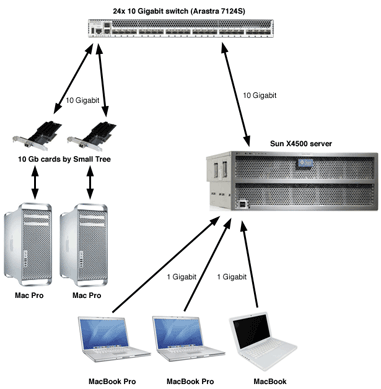
Who would benefit from 10 Gigabit networks?
Customers working with large files on the server
- Customers transferring video files to / from the server
- Larger servers with many users connected
- Multi server sites, all servers could be interconnected via 10 Gigabit
- Customers using proprietary local SAN solutions can switch to standard file server TCP/IP protocols using AFP for Mac clients, and SMB/CIFS for Windows clients
Q & A
Will any 10 Gigabit server offer this great performance?
Tested Configuration
Server:
-
Sun X4500 (with OpenSolaris 11 B85)
- 16 GB RAM
- 48 disks (total of 24 TB or 48 TB, ZFS striped)
- 10 Gigabit Sun card (driver: ixgb)
- 4x 1 Gigabit ports
- Less than 1 € (Euro) per GB
-
2x Mac Pro (2x 2.8 GHz Quad-Core)
- 10 Gigabit fiber-optic Ethernet adapters (Small Tree: PETG1F-XF-SR)
- 3x Mac (Intel) OS X 10.5
- 1 Gigabit onboard Ethernet
-
24x 10 Gigabit ports switch from Arista 7124S with SFP+ fiber-optic SR adapters
(Arista 7148S offers 48x 10 Gigabit ports) - 2x 10 Gigabit Mac Pro client connected with the switch using fiber-optic cables
- 3x 1 Gigabit dedicated lines to 3 Mac Intel clients
- 10 Gigabit testing has been done with jumbo frames using an MTU of 9000. Using the default of 1500 will reduce the performance by about 30% on Mac OS X. This can be changed in the “Network” control panel. On Solaris, the MTU is specified for this “ixgb” driver in “/kernel/drv/ixgb.conf”, add the line “default_mtu = 9000;”
- 10 Gigabit connection has been realized with 10 Gigabit multimode fiber-optic links
Note: The company formerly known as Arastra has changed its name to Arista Networks.
Glossary
XFP
|
Type |
Description |
|
10GBASE-CR |
10 m over copper twinax |
|
10GBASE-LR |
10 Km over SMF |
|
10GBASE-LRM |
220 m over OM1 / 2 / 3 MMF |
|
10GBASE-SR |
300 m over OM3 MMF |
|
1000BASE-LX |
10 Km over SMF |
|
1000BASE-SX |
275 m over OM1 MMF |
|
1000BASE-T |
100 m over UTP |
All listed media types are supported via SFP+ modules using the Arista switch.
MB (Megabyte)
8 Mb=1 MB

 Enterprise Server
Enterprise Server
 Développeurs / SDK
Développeurs / SDK
 Industrie / Commerce
Industrie / Commerce
 Editeurs de journaux / Maisons d'édition
Editeurs de journaux / Maisons d'édition
 Photographes / Studios
Photographes / Studios
 Agences de communication / publicité
Agences de communication / publicité
 Vidéo & Divertissement
Vidéo & Divertissement
 Collaboration depuis le cloud
Collaboration depuis le cloud
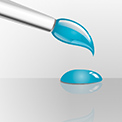 Couleur HD
Couleur HD
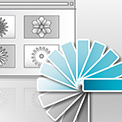 Traitements d'images
Traitements d'images
 L'épreuvage
L'épreuvage
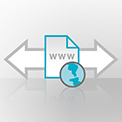 Connectivité WebShare
Connectivité WebShare
 Automatisation de flux
Automatisation de flux
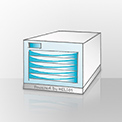 Serveur de fichiers pour l'entreprise
Serveur de fichiers pour l'entreprise
 Communiqués de Presse
Communiqués de Presse Vidéos
Vidéos  Bulletins
Bulletins  Événements
Événements